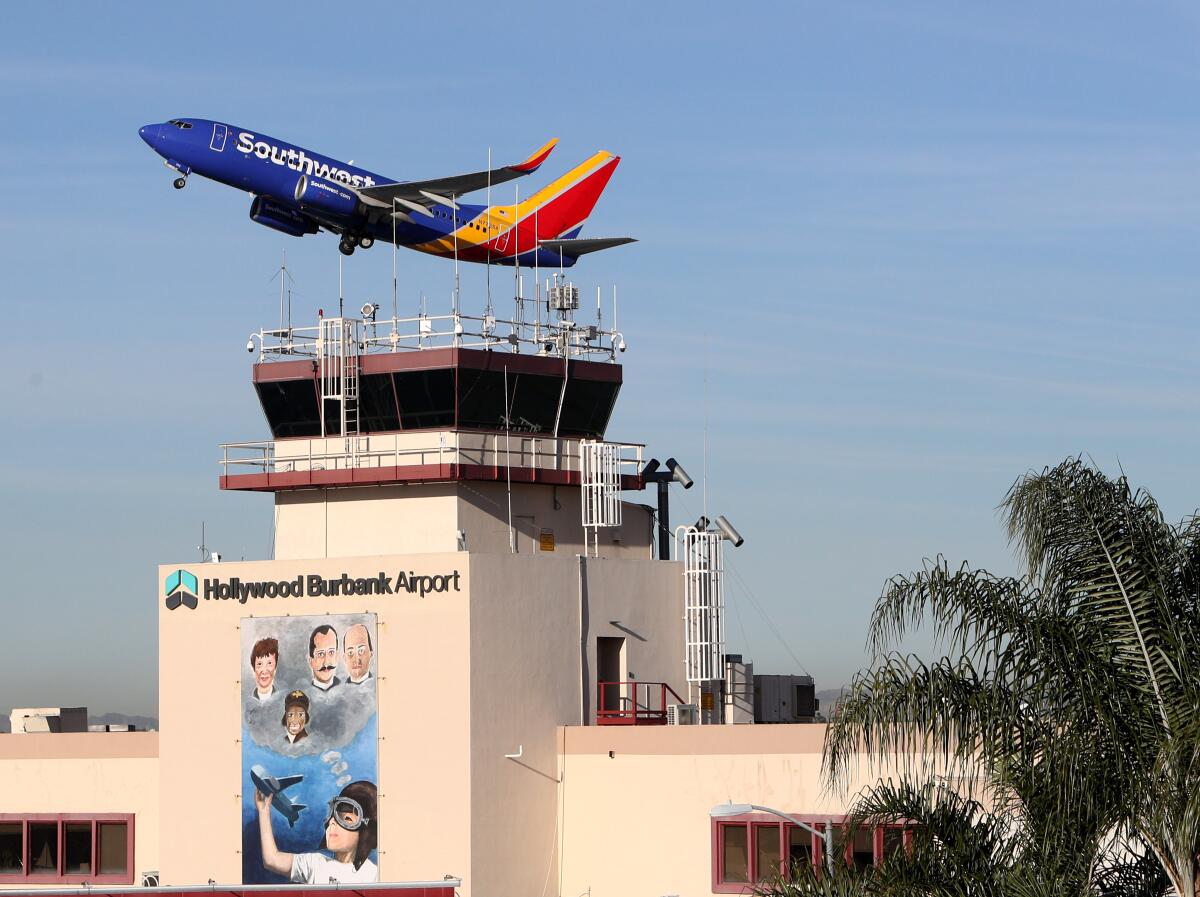Airport task force to consider possible actions to abate noise issues

Members of the Southern San Fernando Valley Airplane Noise Task Force will have a little over a month to develop recommendations about how to address aircraft noise issues affecting the south San Fernando Valley.
After five meetings and hearing from various neighborhood groups and experts, aviation consultant HMMH Inc., which has been the facilitator of the meetings, spent the majority of Wednesday night distilling all of the recommendations that have been brought forward so far and the feasibility of implementing them.
HMMH worked with Kevin Karpe, an aviation expert who worked as an air traffic controller at Hollywood Burbank and the Federal Aviation Administration Southern California Terminal Radar Approach Control, to analyze the departing flight procedures out of the Burbank airfield as well as Van Nuys Airport, both of which are at the center of the noise issues.
Since March 2017, residents in the south San Fernando Valley have complained about an increase in the number of planes flying overhead.
Many blame the FAA’s Next Generation Air Transportation System, or NextGen, which was implemented in Southern California in March 2017.
The satellite-based navigation system was geared toward making flights across the country more fuel efficient and safe. However, NextGen became more of a nuisance than helpful for many people throughout the United States, according to news reports.
In the south San Fernando Valley, planes departing from Hollywood Burbank and Van Nuys have drifted south — from around the 101 Freeway to over Studio City and Sherman Oaks — before making northbound turns to head off to their destinations.
The FAA has stated in the past that NextGen did not change flight procedures out of the two airports, but HMMH and many residents from the region argue that something happened to cause the planes to make their northbound turns later rather than sooner.
Adam Scholten, a senior consultant with HMMH, said the workload of air traffic controllers in the Southern California TRACON, the air traffic control facility located in San Diego that is in charge of handling all of the flights in the region, may be contributing to the flight paths’ southern shift.
Scholten said the FAA often combines some of the six sectors of the Southern California TRACON — depending on whether there is less air traffic in one region and/or there are fewer air-traffic controllers available — a practice that can result in higher workloads.
“Part of the issues with combining sectors is that it can result in paying less attention to things such as standard operating procedures or other agreements that have been established,” Scholten said.
The recommended action to solve the issue, Scholten said, was for the FAA to review its resources at the Southern California TRACON and study how to manage the workload among the air-traffic controllers more efficiently.
The study conducted by Karpe and his consulting firm Diverse Vector Aviation Consulting LLC also found that air-traffic controllers did not always stick to the standard operating procedures for departing flights out of Hollywood Burbank and Van Nuys, which is to direct pilots to make their northbound turns once their planes meet the minimum criteria.
It was recommended that the FAA conduct training to refresh air-traffic controllers about the procedures.
HMMH also reviewed and analyzed the recommendations that were made by the various neighborhood groups.
Members of UproarLA, one of the groups, had suggested that departing flights should take off at a steeper ascent and make their northbound turns before reaching the 101 Freeway.
Scholten said doing so would be difficult because not every aircraft can ascend as quickly as others depending on weather conditions and the load of the plane.
He added that airlines can ignore the request if it isn’t made mandatory.
Gene Reindel, vice president and director of aviation services for HMMH, said planes ascending at a quicker and steeper rate would not be a quieter procedure for the surrounding community.
The organization Studio City for Quiet Skies proposed that should the FAA implement waypoints for pilots to use when departing from Hollywood Burbank, they should be located north of the 101 Freeway.
Scholten said this could not be done because the waypoints would be too close to the planes landing at Hollywood Burbank.
HMMH also showed the task force examples of possible recommendations, which did not go over well with the public.
They demonstrated that if the FAA implemented two waypoints to guide departing flights out of Hollywood Burbank, it would create a narrow and concentrated path above North Hollywood and the neighborhoods just south of the 101 Freeway before planes make their northbound turns.
The consulting firm also displayed what would happen if the current number of departing flights stayed on the path used in 2007. It resulted in a slightly less southern shift but also dispersed flights farther west toward Encino.
The task force will reconvene on April 1 for its final meeting, at which members of the group will deliberate on the best recommended action to address the issues.
The meeting will be held at 6:30 p.m. at the Los Angeles Marriott Burbank Airport, 2500 N. Hollywood Way.
